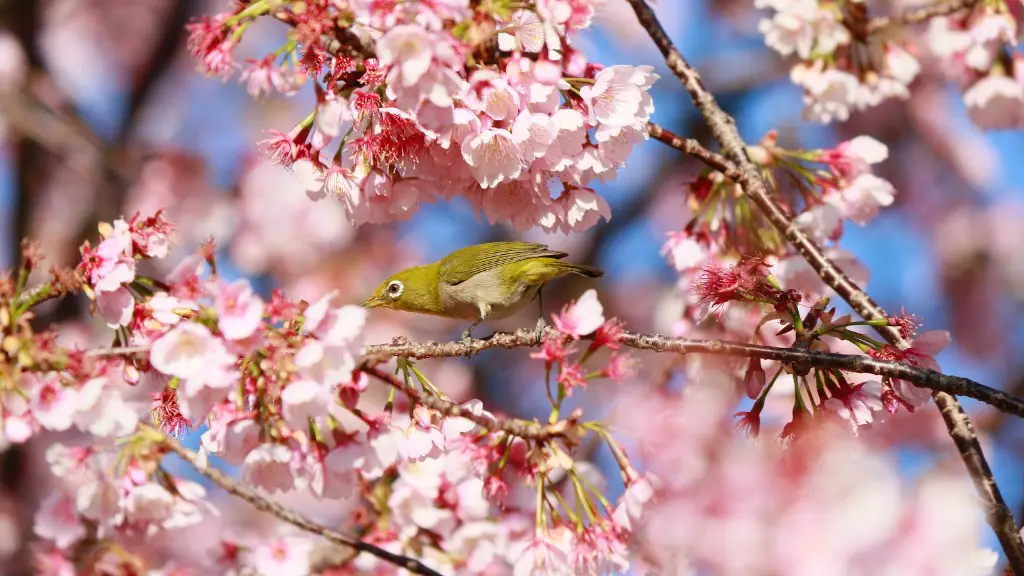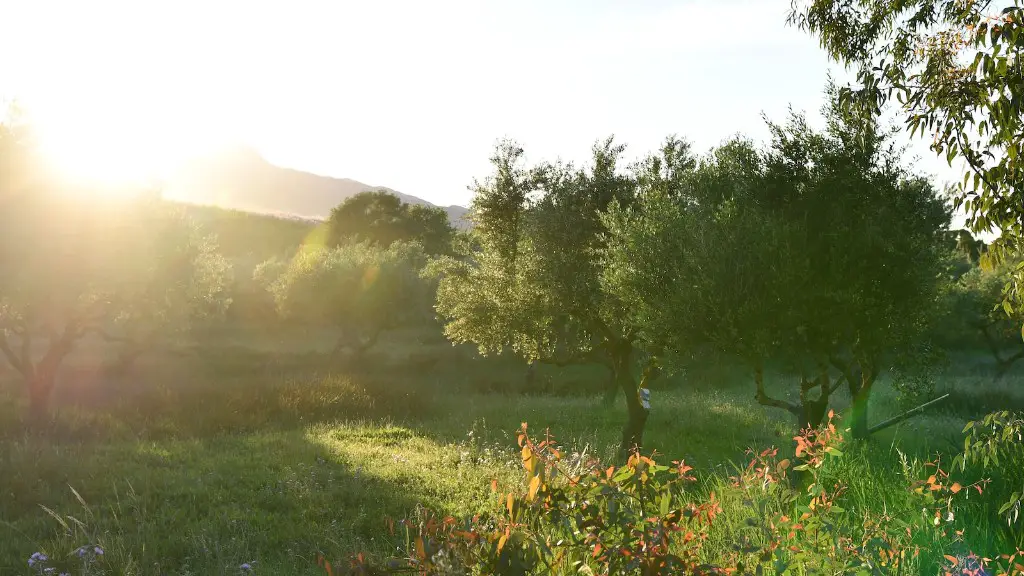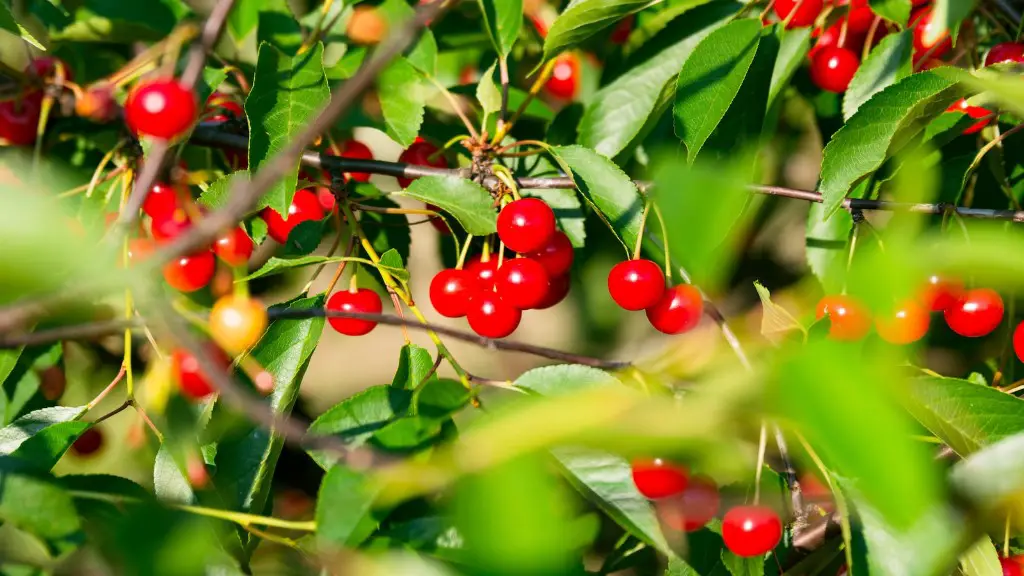Cherry trees are one of the most popular trees to plant in North America, and for good reason. They’re relatively easy to care for and they produce an abundance of delicious fruit. If you’re thinking about planting a cherry tree, or you already have one, here are a few tips on how to care for it.
Water your cherry tree regularly, especially during dry spells in the summer. Apply a 2- to 4-inch layer of mulch around the base of the tree, but keep it away from the trunk. Fertilize your tree in early spring with a general-purpose fertilizer. Prune your tree annually, in late winter or early spring, to shape it and remove any diseased or damaged branches.
Is cherry tree easy to maintain?
Cherry trees are a great option for those looking for beautiful flowering trees with the added bonus of edible fruit. Both sweet and sour cherry trees are easy to grow and both fruits have a wide variety of uses. Sweet cherries are great for eating fresh, while sour cherries are perfect for baking and cooking. Whether you want to enjoy the fruit yourself or share it with others, cherry trees are a great addition to any home.
Watering your cherry tree is important to ensure its health and growth. However, you should be careful not to overwater it, as this can lead to problems. Instead, water it every 7-10 days, or even every two weeks, to give the roots enough moisture without causing problems.
What do cherry trees need to thrive
Cherry trees require full sun in order to produce fruit and to prevent fungal diseases. The sun also helps to keep the tree’s roots healthy and to produce a good crop. Full sun is defined as at least six to eight hours of sunlight each day. Cherry trees also need a well-drained, fertile soil in order to thrive.
Mulch is a layer of material (usually organic) that is spread over the surface of the soil. It can be used for aesthetic purposes, or to keep weed growth down and create a cooler barrier on the ground surface.
Are coffee grounds good for cherry trees?
Coffee grounds are high in acidity and should be reserved for plants that thrive in acidic conditions, such as azaleas and blueberries. If your soil is already high in nitrogen, the extra boost from coffee grounds could stunt the growth of fruits and flowers.
One sour cherry tree is all that’s needed for pollination and fruit set for many sweet cherry varieties. These varieties cannot produce fruit from their own pollen and are considered self-unfruitful. They require cross-pollination from another variety for fruit set.
What is the best fertilizer for cherry tree?
Cherry trees are generally light feeders and prefer a low-nitrogen fertilizer, such as 5-10-10 or 10-15-15. Excess nitrogen can lead to excessive vegetative growth and reduced fruit production. Therefore, it is important to carefully monitor the amount of nitrogen applied to cherry trees.
Pears (established), cherries, plums, gages, damsons and peaches are all fruits that need a balanced general fertiliser in early spring. Organic growers can use similar amounts of dried poultry manure pellets with some organic potassium every three years.
How can you tell if a cherry tree is overwatered
Overwatering trees can lead to a number of problems, including:
-The area around the tree is constantly wet
-New growth withers before it’s fully grown or becomes light green or yellow
-Leaves appear green but are fragile and break easily
If you think your tree may be overwatered, take a look at the soil around it. If the soil is constantly wet, that’s a good indication that you’re giving the tree too much water. You should also look for new growth that is wilted or yellow. If the leaves of the tree are green but fragile and easily broken, that’s another sign of overwatering.
If you think your tree is overwatered, cut back on the amount of water you’re giving it and make sure the soil has a chance to dry out between waterings.
We would recommend using a fertilizer that is intened for fruit trees such as, Ferti-Lome Fruit, Citrus and Pecan Tree Food 19-10-5.
Do you prune cherry trees?
Cherries are a popular fruit, and growing them can be a rewarding experience. However, it’s important to keep in mind that both cherry trees and their fruit need regular pruning to stay in good shape and produce a good crop.
Cherry trees can be too vigorous to be grown as espaliers or cordons, so keeping them compact by annual pruning is a good way to manage them. This also makes the fruit easier to pick and protects it from birds. And, of course, it means the trees take up less space.
Pruning cherries is not difficult, but it’s important to do it right. Be sure to prune in late winter or early spring, before the trees start to produce new growth. And don’t forget to sterilize your pruning tools before and after use to avoid spreading disease.
Cherry trees take a few years to mature and start bearing fruit, but once they do, they produce a good amount of fruit each year. Dwarf cherry trees bear fruit a bit earlier than standard-size trees, but both types of trees produce around 30-50 quarts of cherries annually.
Should I cover my cherry tree in winter
Your cherry tree will go into dormancy over winter and lose all its leaves – this is normal! Although cherry trees are hardy, they may need some protection from extreme temperatures and frosts with horticultural fleece.
Trees that have been improperly pruned or trained may have damaged limbs under heavy fruit production. In order to avoid this, keep an eye on the branch angles and make sure they are not too upright.
Do cherry trees need pruning every year?
Cherry trees should be pruned every year during their dormant season. The only pruning necessary at that time would be to remove any broken or damaged branches and/or roots.
Epsom salt is a great way to sweeten fruits! Just add a boost of magnesium to your fruit trees or vegetables and they will yield larger, sweeter, and more fruits.
Final Words
Assuming you would like tips on how to care for a cherry tree:
1. Plant your cherry tree in an area that gets full sun exposure for best fruit production.
2. Provide well-drained soil for your cherry tree as it does not tolerate standing water.
3. Water your cherry tree regularly, especially during dry spells, to keep the soil moist but not soggy.
4. Fertilize your cherry tree in early spring before new growth begins.
5. Prune your cherry tree annually in late winter to early spring to shape it and encourage new growth.
In conclusion, to care for a cherry tree, water it regularly, fertilize it yearly, and prune it as needed.



